The history of Fender guitars is inextricably linked to the history of rock, blues and many other musical movements of the 20th and 21st centuries. Born from the vision of Leo Fender, this company has become one of the most recognized and respected names in the music world. Here’s a brief look at its fascinating story.
1. Origins and first innovations
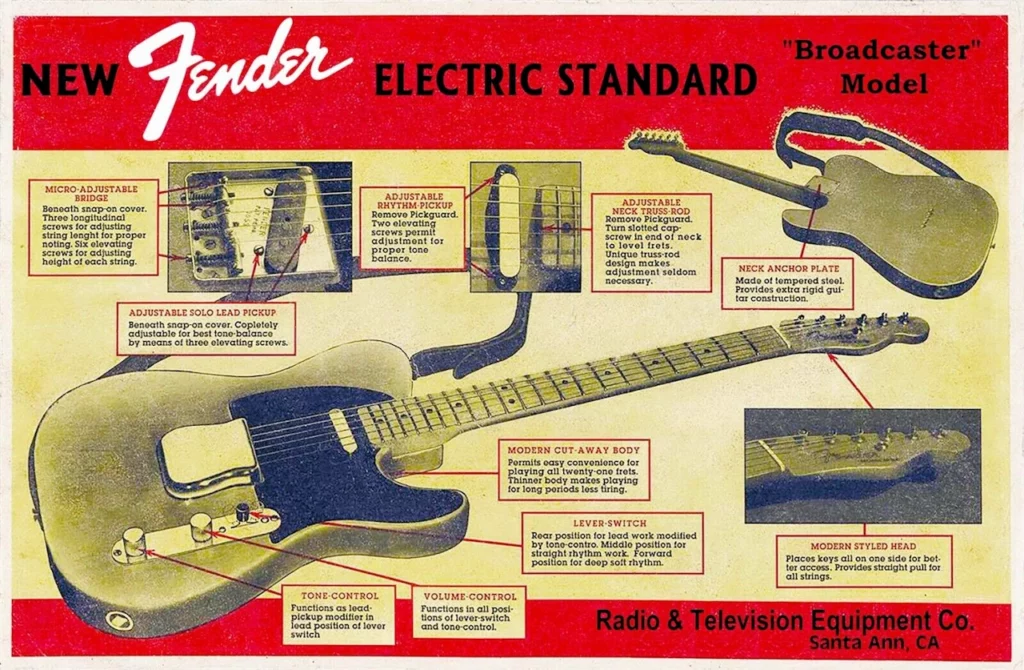
Fender’s roots date back to the 1940s when Clarence Leonidas “Leo” Fender began selling radio equipment in Fullerton, California. But the real revolution came with his foray into the world of musical instruments.
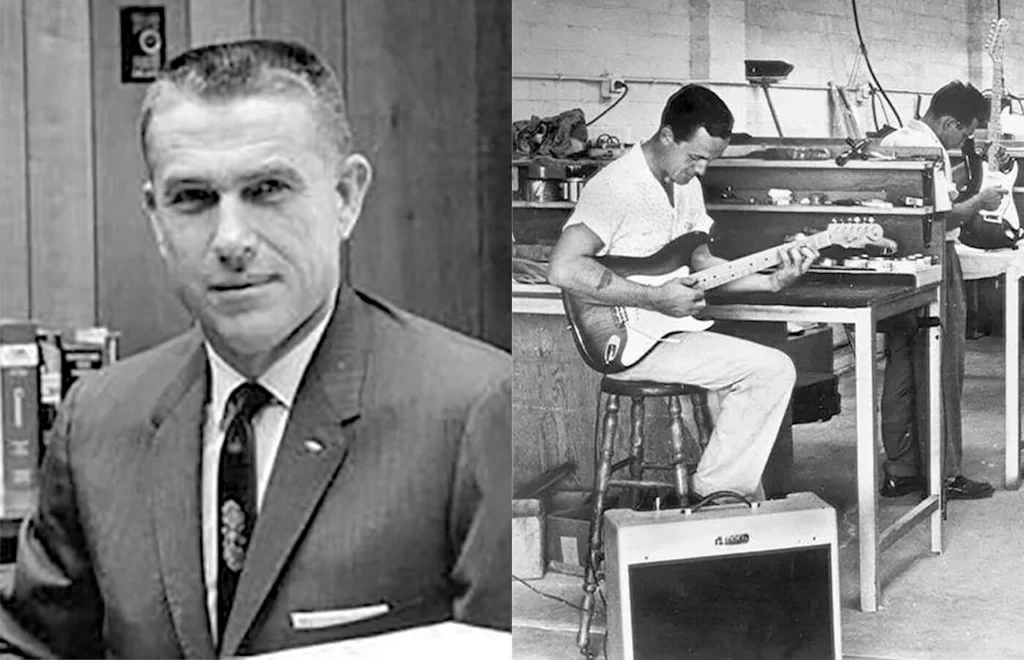
Fender Esquire:

Leo Fender’s very first electric guitar was the Esquire, introduced in 1950. Its simplicity and use of solid body set it apart from competing models, particularly semi-acoustic guitars of the time which were susceptible to unwanted feedback.
The name change:
Due to legal problems with Gretsch, which already had a drum model called the “Broadkaster”, Fender renamed the Esquire to the “Broadcaster”, and finally to the “Telecaster”. This model has become one of the most influential and beloved instruments in the music world.
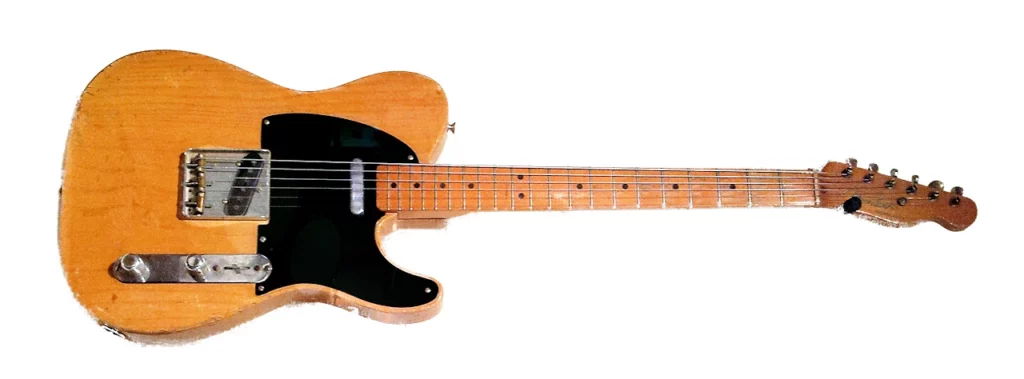
2. The golden era: Stratocaster and Precision Bass
With the success of the Telecaster, Fender went to work on innovative new designs that would further revolutionize the musical instrument market.
Stratocaster:
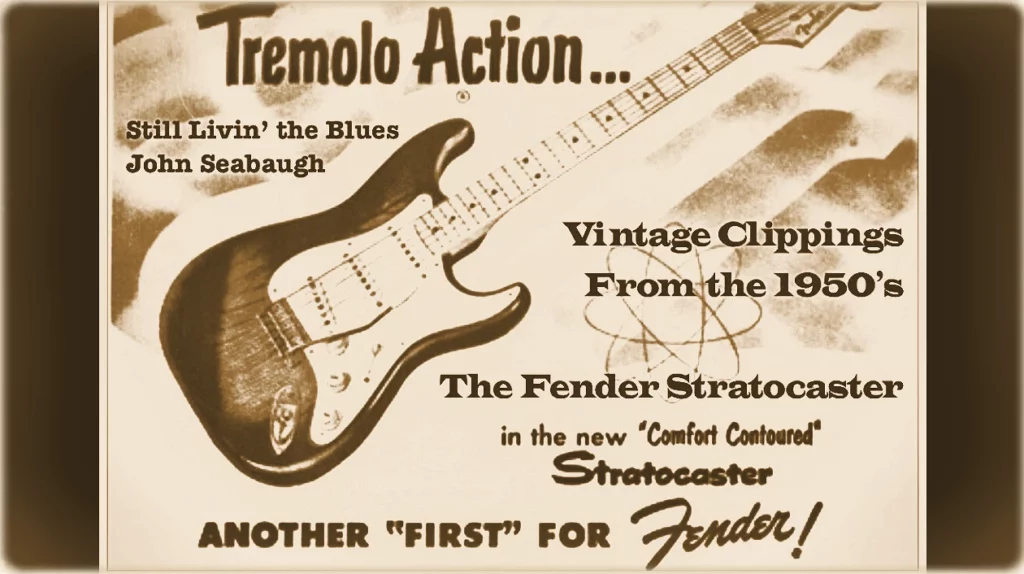
Introduced in 1954, the Stratocaster featured a contoured design, three single-coil pickups and a tremolo system. Its unique design and tonal capabilities have made it popular among guitarists of all genres and led to its adoption by legends such as Buddy Holly, Jimi Hendrix and David Gilmour, making the history of Fender guitars.
Precision Bass:

Even before the Stratocaster, in 1951, Fender had introduced the Precision Bass. It was the first solid-body electric bass and offered players an alternative to the larger, bulkier traditional double bass. The P-Bass, as it is often called, provided a precision in sound never heard before and found a home in musical genres ranging from jazz to rock.
3. Fusion, expansion and return to origins
Fender’s expansion into the global market and its challenges marked a period of change for the company.
Sale to CBS: In 1965, for various reasons, including Leo’s health problems, Fender was sold to CBS. During the period of CBS ownership, many fans noted a decrease in quality and attention to detail on the instruments produced. Under the guidance of CBS, in fact, Fender made some questionable manufacturing choices, prompting many purists to look for models produced before 1965, known as “pre-CBS”.
Buyback and Rebirth: Fortunately, in 1985, a group of executives and investors bought back Fender, restoring the company to its former glory. Under this new leadership, Fender reevaluated its manufacturing standards and launched product lines that paid homage to the original models.
Electric guitars:
Telecaster (originally Broadcaster):
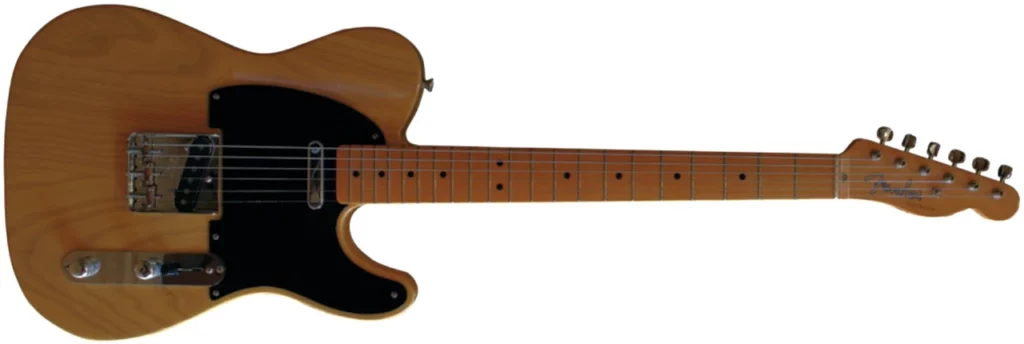
Fender’s first solid body guitar, introduced in 1950.
Stratocaster:

Introduced in 1954, with its distinctive design and three pickups.
Jazzmaster:
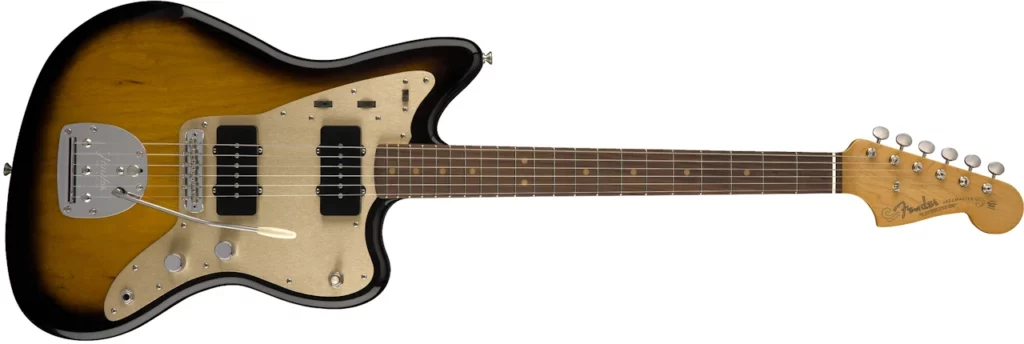
Launched in 1958, designed for the jazz market but became popular in surf rock and indie rock.
Jaguar:
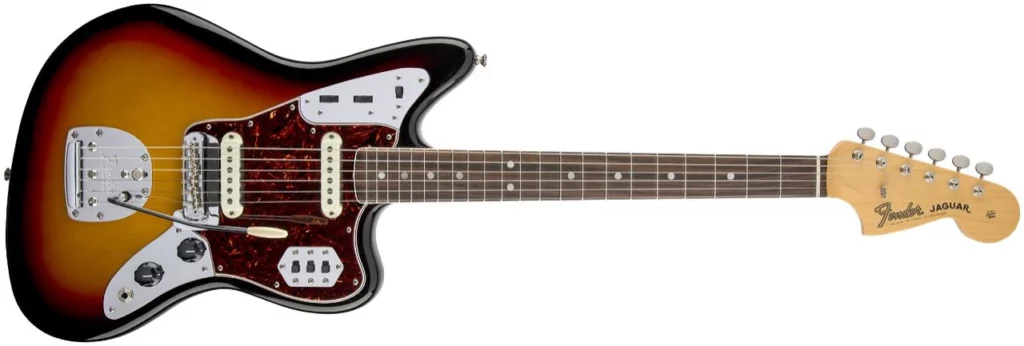
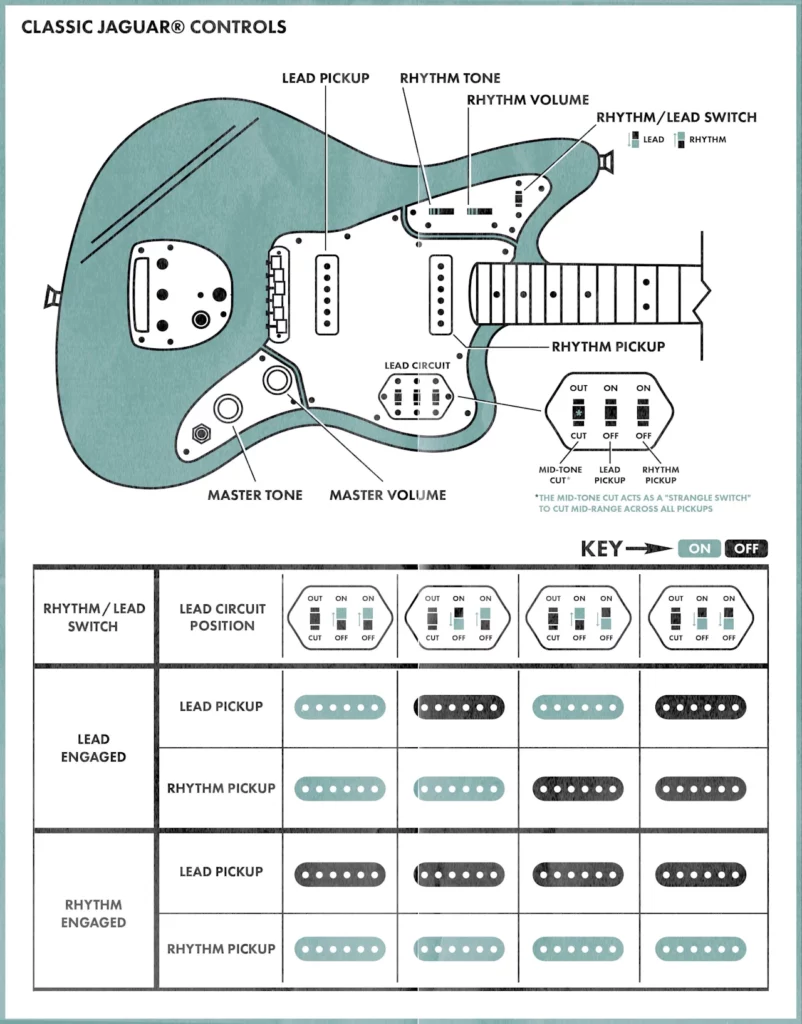
Introduced in 1962 with a similar design to the Jazzmaster but with a shorter body and complex switch system.
Mustang:

Launched in 1964 as an entry-level model.
Duo-Sonic & Musicmaster:
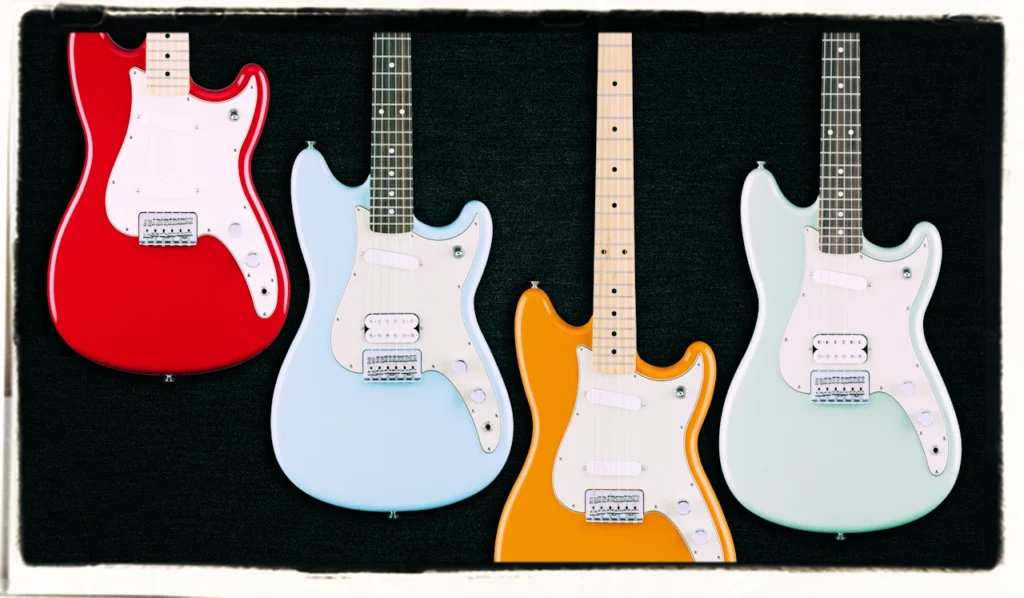
Other entry-level models introduced in the 1950s and 1960s.
Marauder:
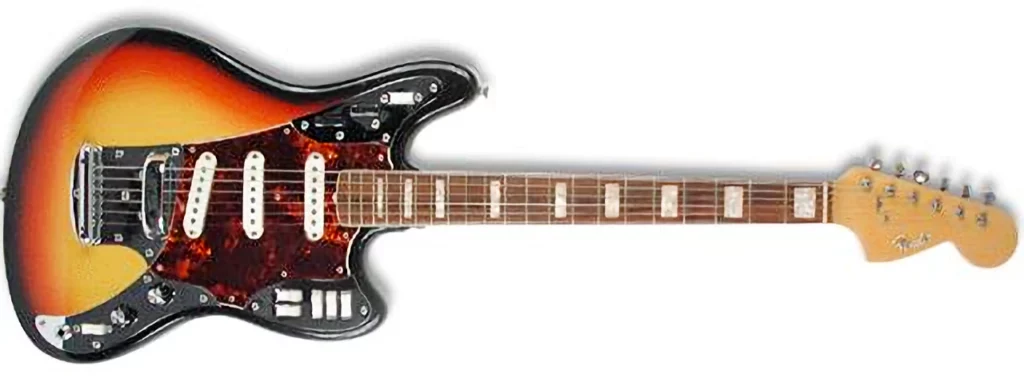
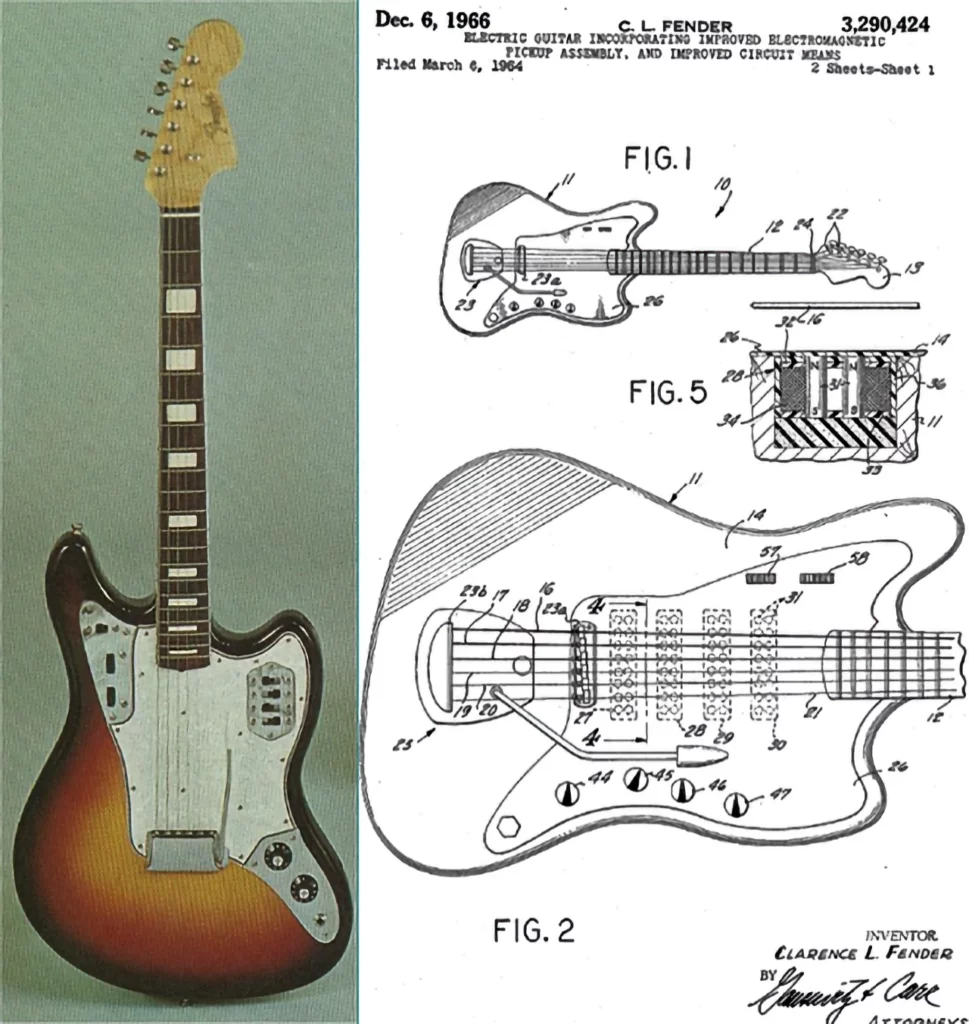
Produced briefly in the mid 1960s.
Starcaster:
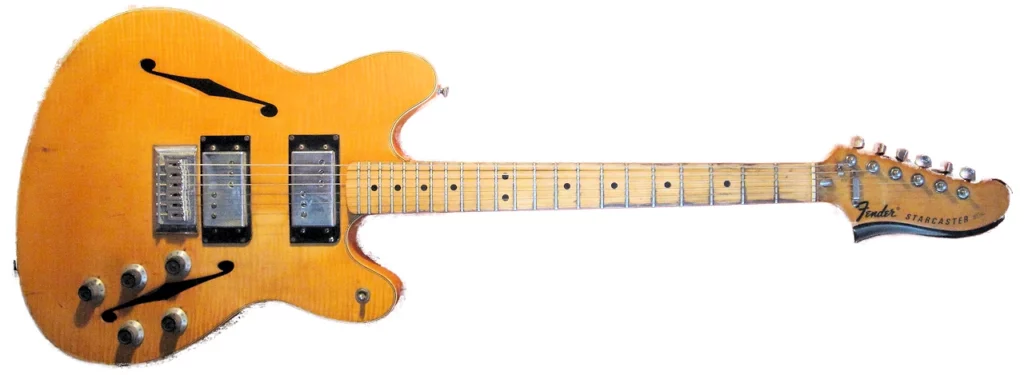
A semi-acoustic guitar introduced in the 1970s.
Electric basses:
Precision Bass (P-Bass):

Introduced in 1951, it was the first solid-body electric bass.
Jazz Bass:

Launched in 1960 with a slimmer design and two pickups.
Mustang Bass:

A bass version of the Mustang guitar.
Telecaster Bass:

A sort of reissue of the original P-Bass.
Acoustic Guitars: Over the years, Fender has also produced a variety of acoustic guitars, including the Newporter, Malibu, and Kingman series, among others.
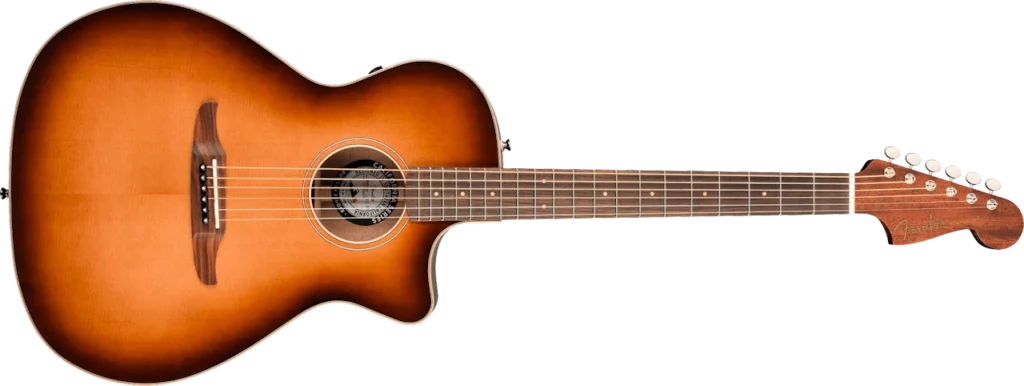
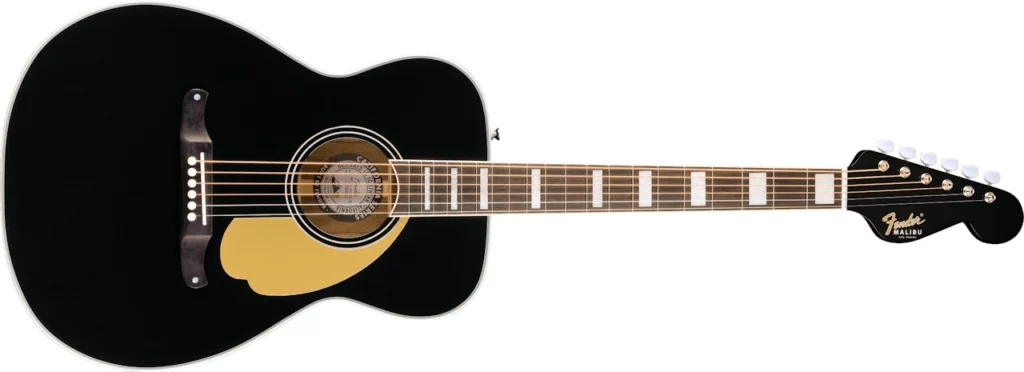
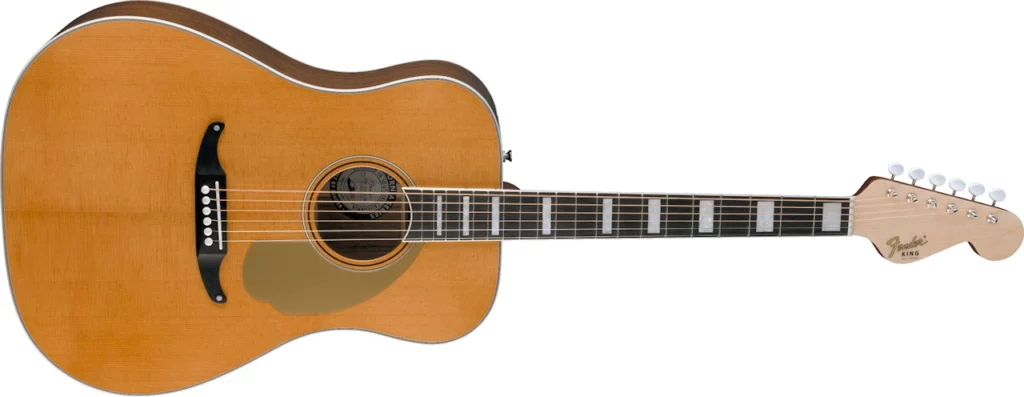
Electric-Acoustic Guitars: Fender has also produced electric-acoustic guitars, combining electric design with acoustic capabilities. In addition to these main models, there are many variations, special editions, reissues and signature models produced in collaboration with famous artists.
4. Guitar legends and their Fender choice
Fender guitars have found a special place in the hands of many of history’s greatest guitarists. Here is a short list of some of these iconic artists and their choice of instrument:
Jimi Hendrix:
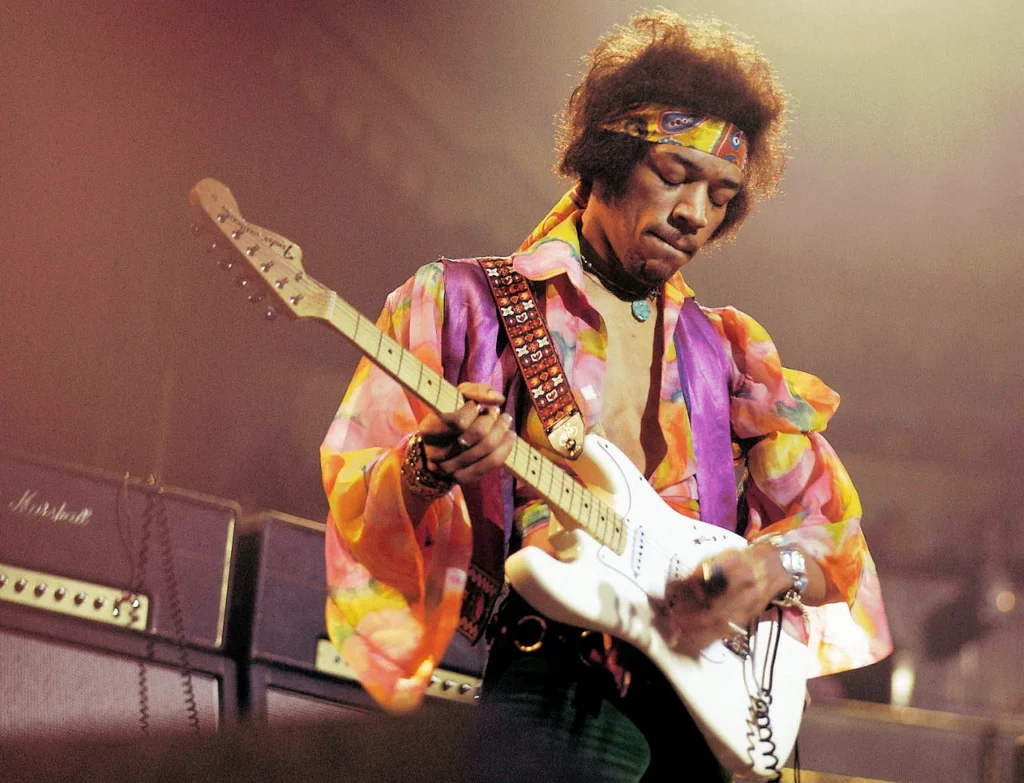
Probably the most iconic guitarist associated with the Stratocaster. His ability to harness feedback and utilize the Strat’s tremolo redefined what was possible with an electric guitar.
Eric Clapton:

Another great lover of the Stratocaster, Clapton adopted the model in the 1970s and has been closely associated with it ever since, with his famous “Blackie” and later with signature models produced by Fender.
Buddy Holly:
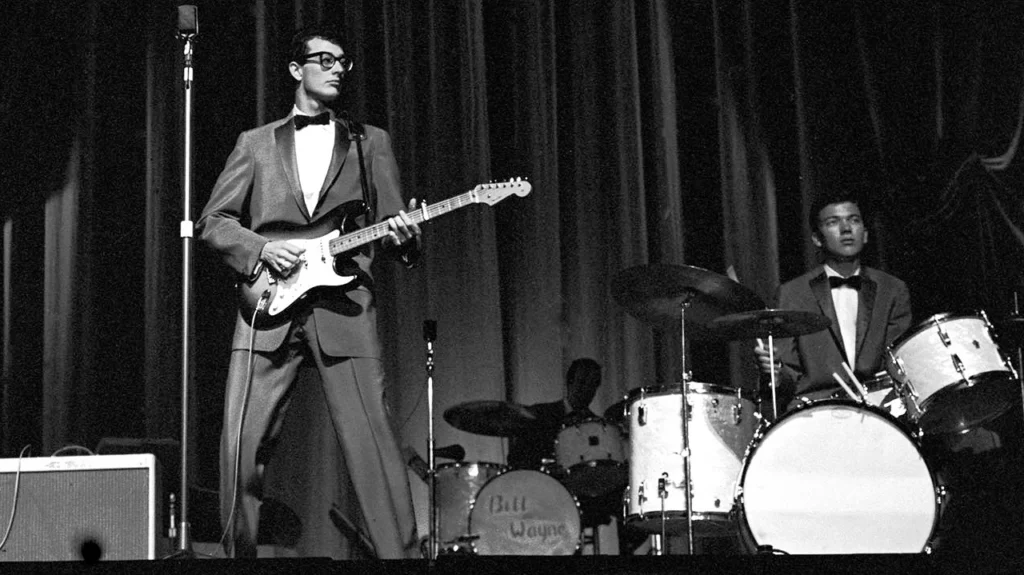
One of the pioneers of rock’n’roll, Buddy Holly popularized the Stratocaster in the 1950s, showing the world the potential of this new type of guitar.
David Gilmour:

The Pink Floyd leader is known for his inimitable sound, achieved largely with a black Stratocaster. He has also had several custom Fender models over the years.
Bruce Springsteen:

Known as “The Boss,” Springsteen is often seen with his Fender Telecaster, a staple of his American rock sound and History of Fender guitars.
Mark Knopfler:

The Dire Straits frontman is closely associated with his red Stratocaster, with which he created some of the most memorable guitar riffs in rock history.
These are just a few of the many legendary artists who have chosen Fender as their main instrument. From every corner of the globe and across every genre of music, Fender has left its mark.
Fun facts:
Leo Fender, despite creating some of the most iconic guitars of all time, couldn’t play the guitar6
Jimi Hendrix’s original Fender Stratocaster guitar, with which he played the American anthem at Woodstock, has sold at auction for nearly $2 million7.
From humble beginnings in Fullerton, California, the history of Fender guitars has come a long way, creating instruments that have influenced generations of musicians and redefined entire musical genres. Fender’s history is a testament to the innovation, passion, and power of music.
References:
- Fender Official Website – History ↩
- Vintage Guitar Magazine – The Fender Broadcaster ↩
- Stratocaster Chronicles, Tom Wheeler, Hal Leonard ↩
- Fender Precision Bass – A Brief History ↩
- CBS and The History of Fender ↩
- Leo Fender: The Quiet Giant Heard Around the World, Phyllis Fender, Leaders Press ↩
- Jimi Hendrix’s Woodstock Strat Auction ↩
And if you also love the world of guitars, why not take a look at the dedicated section of the site?

 it_IT
it_IT